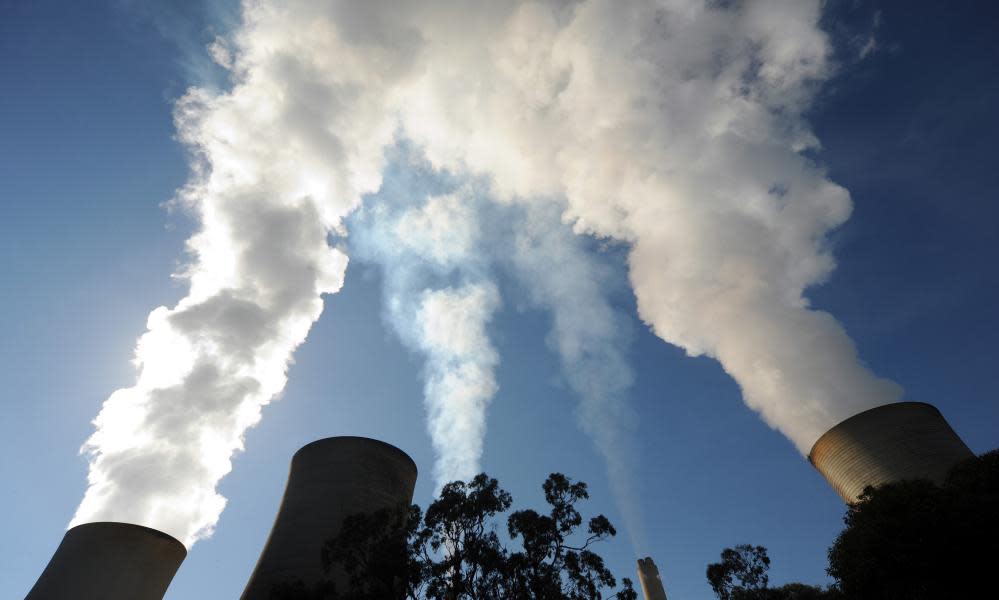Nearly one in five of Australia's big polluters breach government-set emissions limits

Nearly one in five of Australia’s big polluting industrial sites increased greenhouse gas emissions above government-set limits last financial year, an analysis of official data shows.
It found 38 of the 210 mines, smelters, refineries and other industrial facilities covered by the federal government’s “safeguard mechanism” policy exceeded previous pollution limits based on historic or projected emissions.
Combined, they emitted about 790,000 tonnes of carbon dioxide more than they would have had they stayed within their limit set before the start of the year.
Under the rules of the safeguard mechanism, companies in breach of their limit without good reason are expected to either buy carbon credits or pay a penalty to offset those emissions.
But the Australian Conservation Foundation (ACF) found about 729,000 tonnes of the emissions above previously agreed limits went unpenalised last year as companies were allowed either permanent or temporary increases.
Based on the average cost of a carbon credit, the changes allowed companies to avoid paying about $10.3m for offsets. Some companies were required to offset their excess emissions; they paid $863,860 in total.
Related: Smoke screen: how Australia's biggest polluters have been free to increase emissions
Gavan McFadzean, ACF’s climate change program manager, said not requiring industrial polluters to pay for CO2 left Australian taxpayers to “pick up the tab” through the $2.5bn emissions reduction fund.
“This is real pollution entering the atmosphere – pollution we can’t bring back, pollution that is heating the planet,” he said. “Ultimately, everyone will pay for this, whether it’s through losing a home to unseasonal bushfires, through food shortages as a result of worse droughts, or through not having coral reefs to appreciate.”
The safeguard mechanism was announced by the then environment minister Greg Hunt in 2015. He said it would put “a limit on the emissions that individual firms can have” to ensure cuts paid for by taxpayers through the emissions reduction fund were not just wiped out by increases “above business-as-usual levels” elsewhere.
In practice, companies have regularly applied for and been granted higher limits, or baselines. It has prompted some business representatives and climate campaigners to question the point of the scheme.
The data released last week shows industrial emissions covered by the mechanism rose 5.6m tonnes, a 4% jump on the previous year. Some of the increase was from companies that lifted their emissions while staying within their limit.
A spokesman for the minister for emissions reduction, Angus Taylor, said all emitters met their obligations under the scheme last year.
Rising industrial pollution means national emissions have dipped only slightly, according to the most recent greenhouse accounts, despite reductions from electricity and drought-affected agriculture.
The data covers a period well before the coronavirus pandemic forced a significant economic shutdown. It is expected emissions will fall this year, though analysts have warned they are likely to return to previous levels once the threat from the virus has passed unless policies change.
In addition to companies emitting at levels above previous baselines, the data shows a growing number of companies have been granted what is known as a multiyear monitoring period, under which emissions limits are no longer annual, but spread over a number of years. The number of facilities with these multiyear limits increased from 17 to 31.
McFadzean said it was effectively another way for companies to avoid paying for emitting too much in a given year. “In many cases they are not reducing their emissions in subsequent years, but instead are allowed to recalculate their baselines and pollute more,” he said.
The safeguard mechanism sets a baseline for industrial facilities that emit more than 100,000 tonnes each year. When the scheme began, baselines were based on either a facility’s highest emissions level over the previous five years or an independent forecast of future pollution.
Under changes introduced this year, all facilities are moving to limits based not on total emissions, but on emissions intensity – how much they emit per unit of production. It means that companies that lift production will be able to release more CO2 without risking a penalty.
It could also allow a government to require companies to reduce emissions intensity over time to drive a shift to cleaner practice without affecting production levels. Labor indicated it would have done this, without releasing much detail, if it won last year’s election.
In 2015, Hunt said the safeguard would be used to cut emissions by 200m tonnes over the decade to 2030, but the government later shelved that estimate. The policy was not included among policies that the government said would help it meet Australia’s commitments under the Paris climate agreement.
In February, Taylor said the safeguard mechanism was “designed to support growth while encouraging businesses to lower their emissions intensity”.
The Carbon Market Institute, representing businesses focused on climate action, has called for the safeguard mechanism and emissions reduction fund to be reformed as part of a post-virus economic repair that also focuses on “land and climate repair”.
The institute’s chief executive, John Connor, said the emissions reduction fund would need to be less dependent on taxpayer’s money and increasingly driven by business, and baselines under the safeguard should be strengthened to cut pollution over time.

 Yahoo News
Yahoo News 